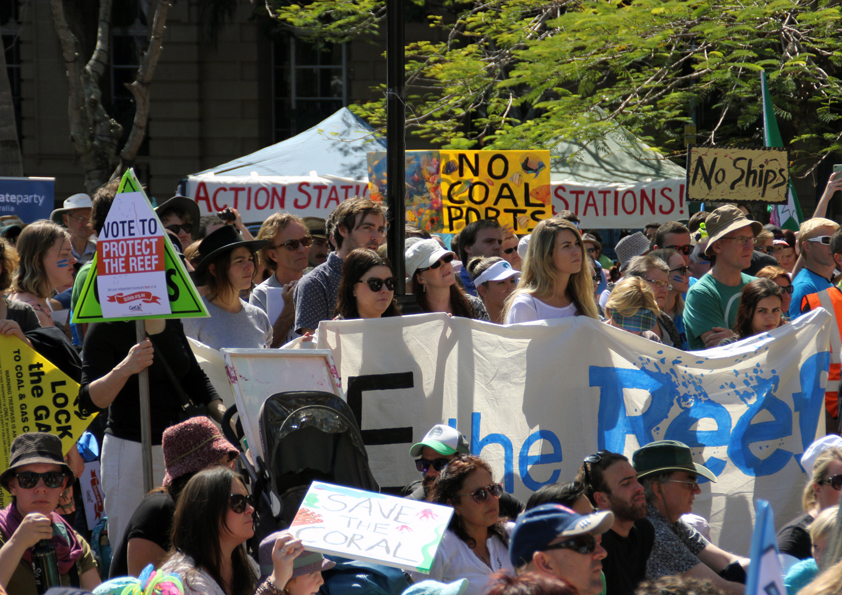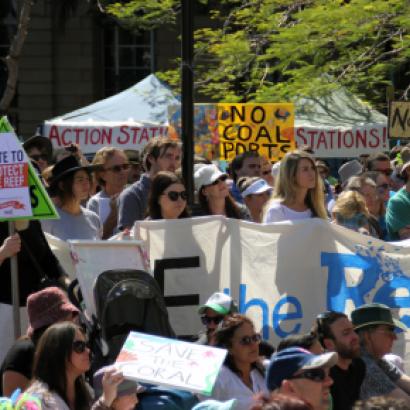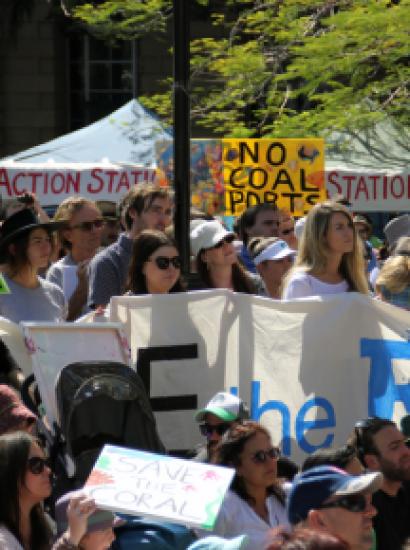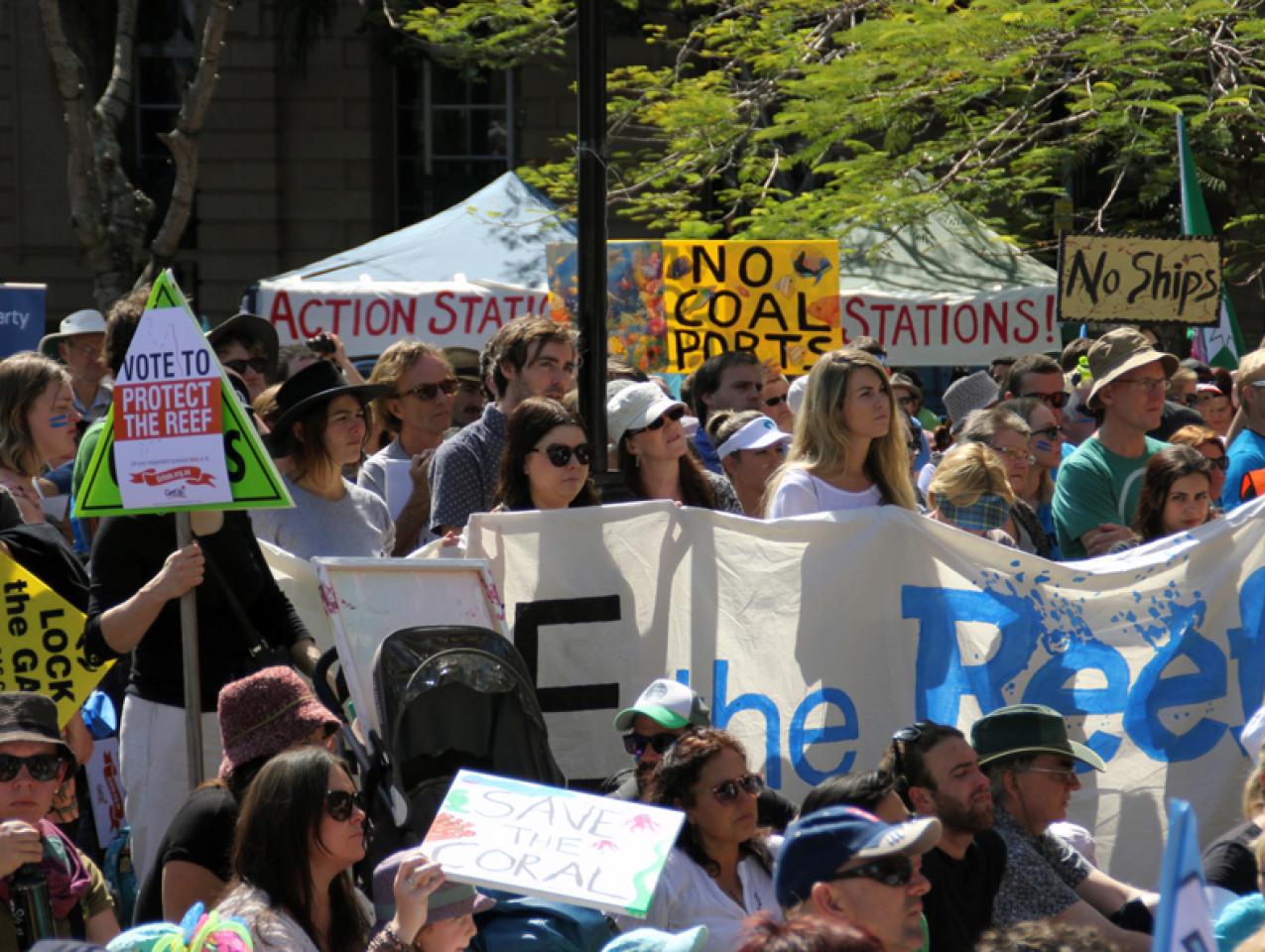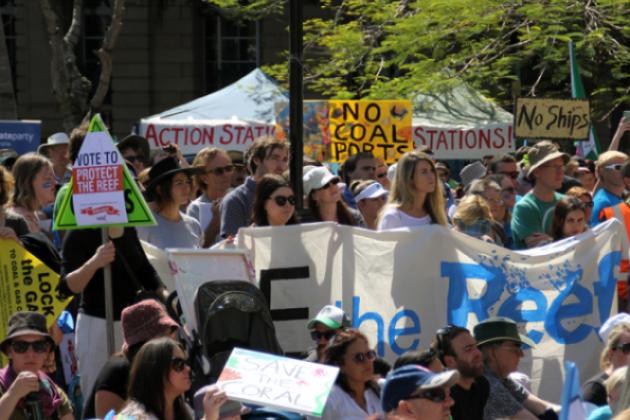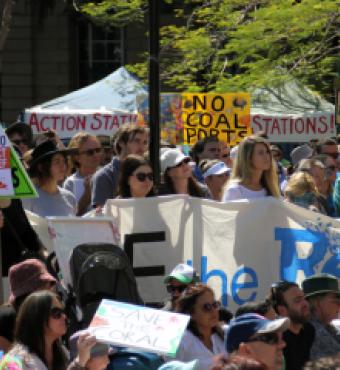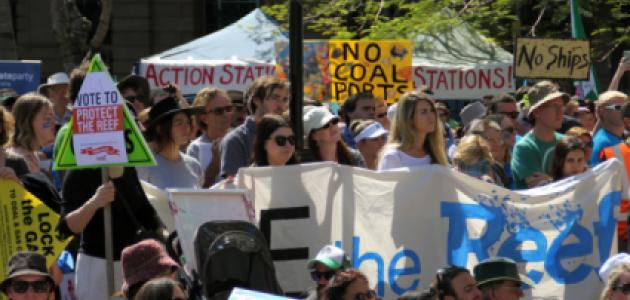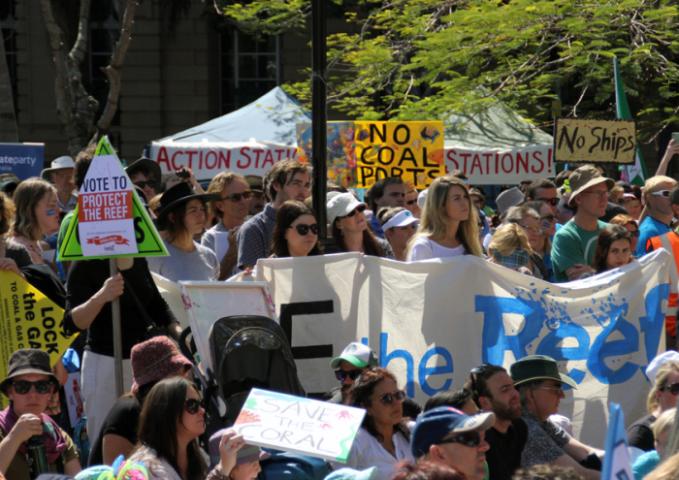- Energy & Environment
There is a renewed debate in high places over whether university endowments should divest themselves of their stock holdings in fossil fuel companies. Thus far, most universities—notably Harvard, Yale and Brown—have opposed the demand for divestment. Others, like Stanford, have taken steps to reduce their holdings in coal companies, but not other fossil fuels, which like natural gas, pose far less danger to the environment. The University of California system announced that it was still on the fence regarding this key issue.
This debate asks universities, as moral agents and political actors, to choose between the higher returns of a diversified portfolio and their need to protest the risks that fossil fuels pose to the climate. The initial objection to the divestiture programs is that they may be unnecessary in light of recent data undermining any connection between atmospheric carbon dioxide and global warming, now that the earth’s temperature has remained stable over the past 17 years, notwithstanding a substantial increase in carbon dioxide levels.
The correct approach to this debate should not dwell on the conflict between financial diversification and global warming. Instead, it should rethink the way to regulate and tax fossil fuel emissions. Currently, the amount of energy generated per unit of pollution could be rapidly increased by undoing deeply entrenched, but perverse, energy policies.
The key error stems from the risky practice of grandfathering existing sources of pollution while imposing high regulatory standards on new facilities and equipment. This differential enforcement creates perverse incentives that systematically increase pollution levels by postponing the orderly substitution of new (and cleaner) for old (and dirtier) plants. The Clean Air Act of 1970 (CAA) unwisely exempted existing dirty plants from the full brunt of the law, which applied with force only to new coal facilities. The regulators naïvely assumed that these old plants would be phased out anyway in a few years.
Undoubtedly this result would have taken place without the CAA, given the higher cost of running inefficient older plants. But the CAA’s heavier controls on new plants increased the relative price of energy produced from new sources, giving existing coal companies a strong incentive to keep their older plants in service long past their economically useful life. The companies found it easier to modify existing facilities than to put a new plant on line. The higher new plant standards also blocked off new entrants into the energy business, unnecessarily increasing industry concentration levels and further raising prices.
Faced with barriers to new plant construction, courts and regulators were loathe to risk a total shutdown of existing coal facilities, so a combination of administrative rules and judicial decisions have kept these plants on line far longer than they should have been, some even to the present day.
The situation has come to a head recently with the debate over the new regulations proposed by the Obama Administration’s EPA to restrict greenhouse gas emissions from coal-powered plants. The new EPA action requires a regulatory catch-up that could well shut down a large fraction of the existing facilities, many of which should have, and would have, been shuttered years ago. The political landscape is further complicated by a fierce response from companies who operated in reliance on the old regime and are now fighting the EPA’s regulatory initiative.
My purpose here is not to comment on the merits of the EPA’s proposals. Rather, it is to point out that these current disputes could have been avoided as far back as 1970 by following one simple maxim: The EPA should regulate outputs, not inputs. That approach derives from the sensible rules governing private lawsuits against polluters under the judge-made law of nuisance, which operates on a strict liability standard that does not allow a polluter to defeat liability by claiming that its emissions are cost justified. Instead, in all cases, the Court measures damages to victims solely by the amount of harm that the pollution causes, without considering the cost that private parties must incur to reduce or eliminate that pollution.
At this point, the individual firm is forced to ask whether its gains from current production are sufficient to justify the heavy damages that it must pay to others. Often that answer is no, so that the firm will then voluntarily cut back on its emissions to minimize the sum of three variables: the cost of pollution, the cost of pollution prevention, and the administrative costs of making these calculations. If the costs of pollution are correctly set, the firm will make the right social decision on its own initiative.
Now that the government is out of the business of measuring inputs, it will no longer have to make independent judgments about the “best available technology” (BAT) for pollution, which typically “is a case-by-case determination of an emission limit and/or control technique which, taking into account environmental, energy, and economic considerations, represents the maximum emission control achievable by any new or modified source of air pollution.” No one knows how to make these determinations, which require deciding whether a reduction of 90 percent pollution at a cost of $1 million is preferable under the law to a reduction of 99 percent of pollution at the cost of $10 million, when the net profits before regulation are $5 million.
Instead of these intractable disputes, it’s better to ask whether, at the margin, the additional cost of pollution control is justified by the environmental gains achieved. Only a firm has the information needed to make these continuous adjustments. Let the government set the per-unit tariff for pollution and the firm will figure out its compliance strategy, independent of political machinations. To be sure, this system requires some collective measurement of pollution costs from various types of emissions. But any system of state regulation has to ask that question, including one that uses BAT.
But BAT also demands a lot more in seeking to set the relevant inputs, for now everyone has bad incentives. More specifically, a regulated utility will downgrade the expected benefits of technological improvements while talking up the costs of implementation. Environmental activists, with none of their own dollars on the line, have the exact opposite incentive. No court can easily work its way through the BAT minefield, but they still must review, at a great cost in time and money, a wide range of necessary EPA decisions under the CAA.
Today’s conventional wisdom holds that the political organs of government must correct the fundamental design mistakes that they previously created. That conclusion rests on the belief that the United States Constitution places no strong constraint on Congress or the states. That result is surely correct under the low “rational basis” standard, entrenched by the New Deal revolution of 1937, and currently used to review to legislation on complex forms of economic regulation. The underlying attitude was that the courts should not act as a super-legislature on economic matters properly confined to the legislative and executive branches. Thus the major constitutional transformation—the word “achievement” is inappropriate—got courts into the business of deciding which forms of regulation advanced genuine interests in health and safety and which were forms intended to upset the competitive balance among firms.
The so-called Lochner-era decisions of the Supreme Court relied on just that distinction to enforce vigorously the antitrust laws against cartels while striking down mandatory collective bargaining and minimum wage laws for their manifestly anticompetitive efforts. The rejection of that earlier line of jurisprudence has led to the massive expansion of government regulation over labor markets in the form of the National Labor Relations Act and the Fair Labor Standards Act, which have had exactly the effect of creating monopoly institutions and imposing entry barriers at the bottom end of the labor market, hurting the workers with the most limited skills.
Much environmental regulation tests that same line between bona fide efforts to regulate health and safety and unprincipled efforts to use environmental laws to restrict competition. Perhaps the most notorious illustration of this practice in the air pollution area was the clean air/dirty coal provisions of Section 111 of the 1977 Amendments to the Clean Air Act, which vastly increased the cost of getting clean air by shifting the competitive balance between low-sulfur western coal and high-sulfur eastern coal.
The ingenious system required the same percentage reduction emissions from the two types of coal even though unscrubbed western coal was still cleaner than scrubbed eastern coal. This law (which lasted under the 1990 Clean Air Amendments) illustrates how powerful political figures (Robert Byrd of West Virginia and Howard Metzenbaum of Ohio) could take advantage of weak constitutional structures to impose destructive legislation, which should be struck down because of its massive implicit economic subsidies for dirty eastern coal.
The same proposition holds true, moreover, for many other features of the Clean Air Act, including the rules that favor old source pollution over new source pollution, which have similar distorting effects. Indeed, the backbone of the 1970 Act calls for the creation of state implementation plans (SIPS) that establish National Ambient Air Quality Standards (NAAQS) under federal guidelines. These rules also create only weak and uncertain obligations for individual polluters, and thus give first state governments and then the EPA dangerous discretion to figure out which potential sources of pollution should bear the brunt of meeting the NAAQS applicable to any given region. The indefinite structure of these liabilities on local firms (like the indefinite structure of property rights) kicks off yet another round of political jockeying. The point of a sound constitutional standard is to knock out the ability of Congress and the states to corrupt pollution control devices with disguised wealth transfer systems, which the current constitutional standards invite.
The great lesson of modern public choice theory is that democratic political institutions cannot resist the pressures of faction on their own. In some cases, there are no judicial remedies for those abuses, but in these critical cases, the simple shift from measuring inputs to taxing outputs can avoid these losses: the billions in wasted expenditures over 45 years; lost energy efficiency; and higher pollution-related deaths and ailments. It is this reform, not divesture of fossil fuels, that the environmental activists should promote.







